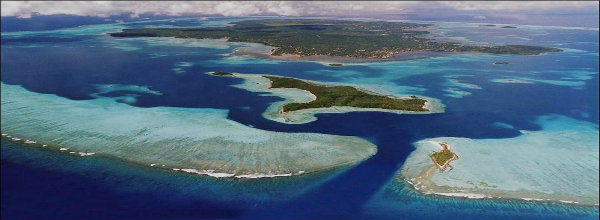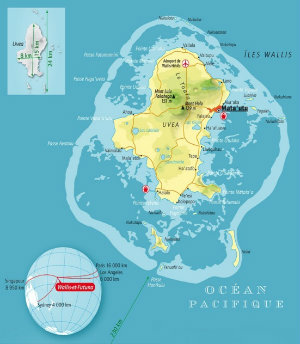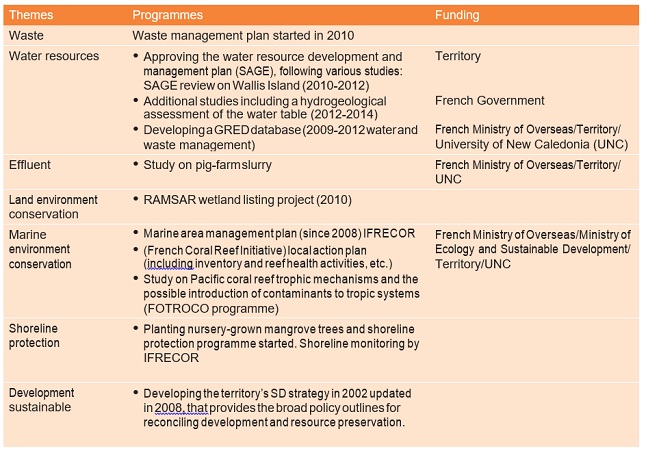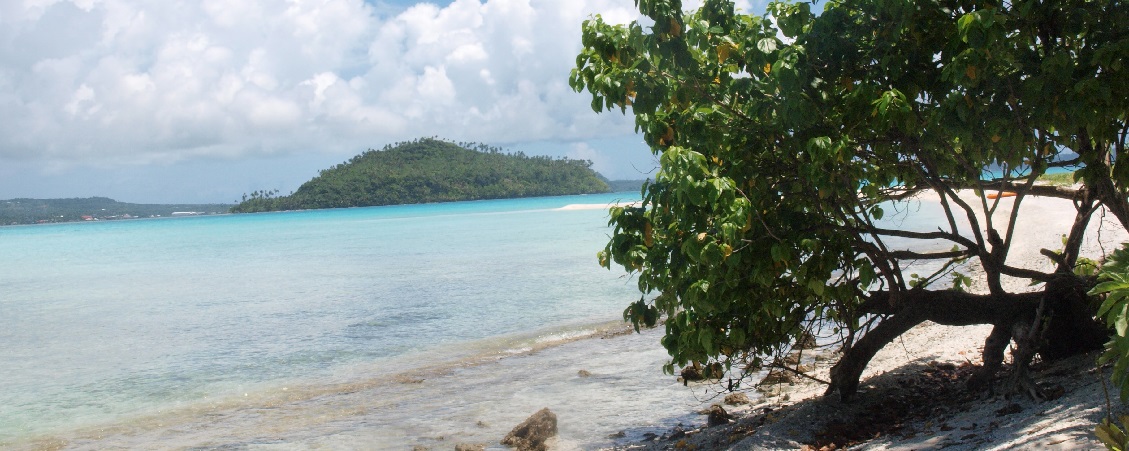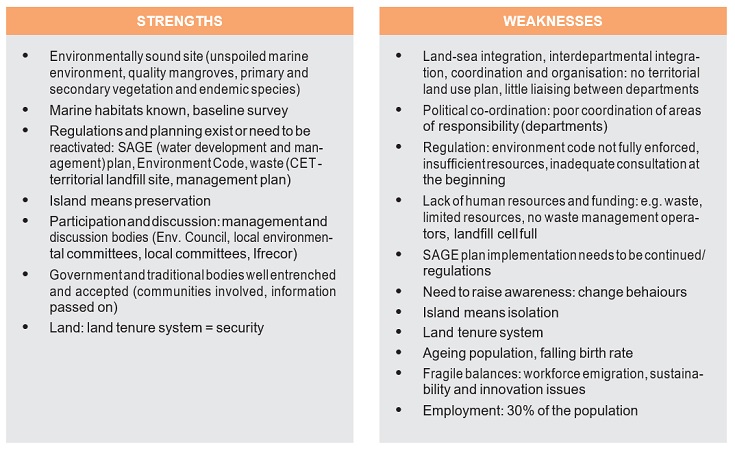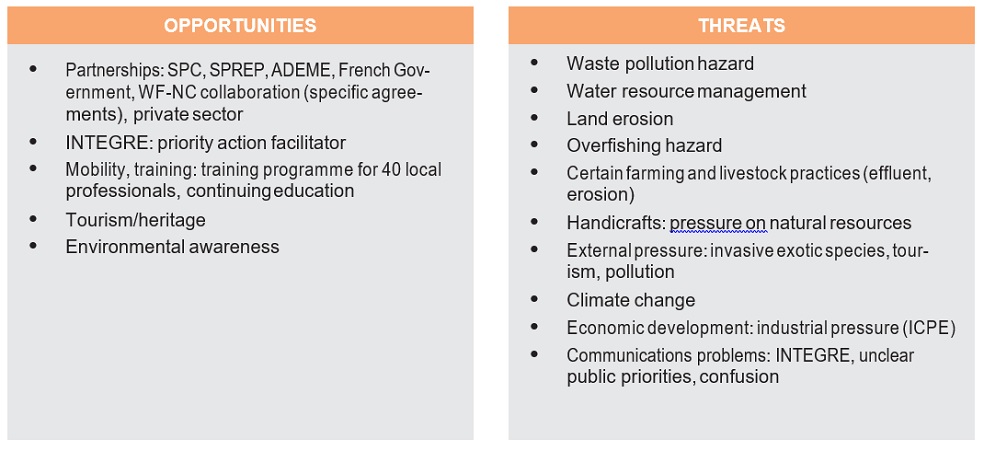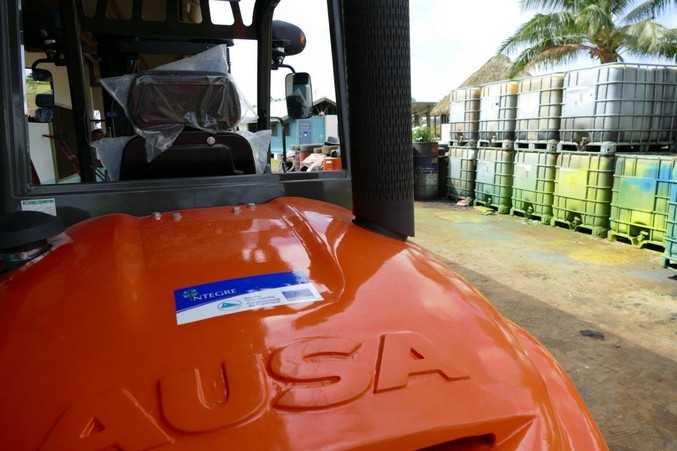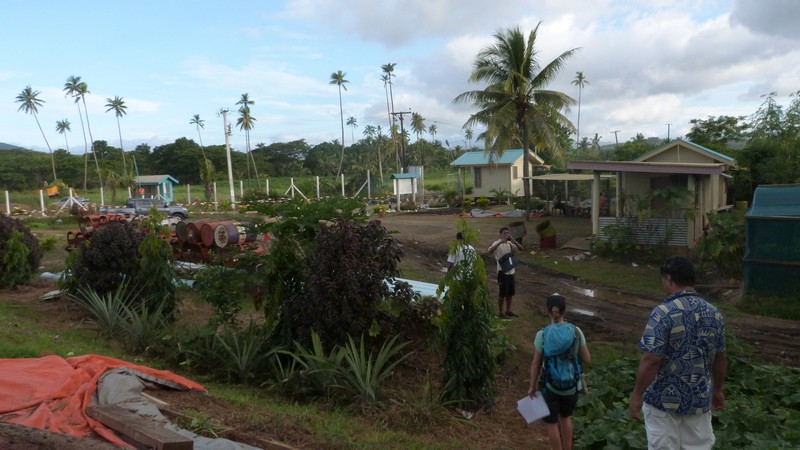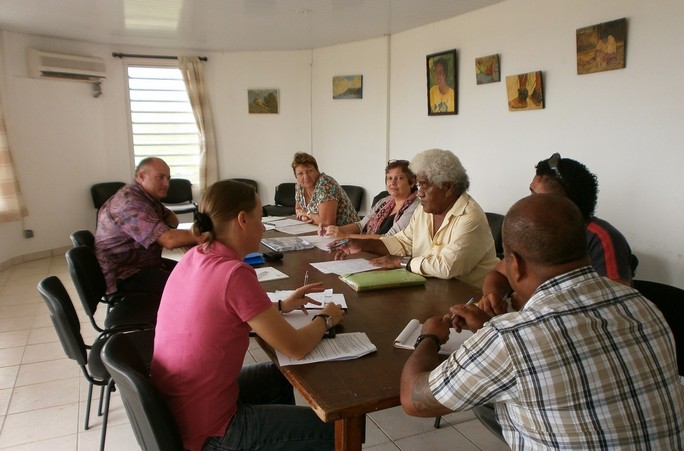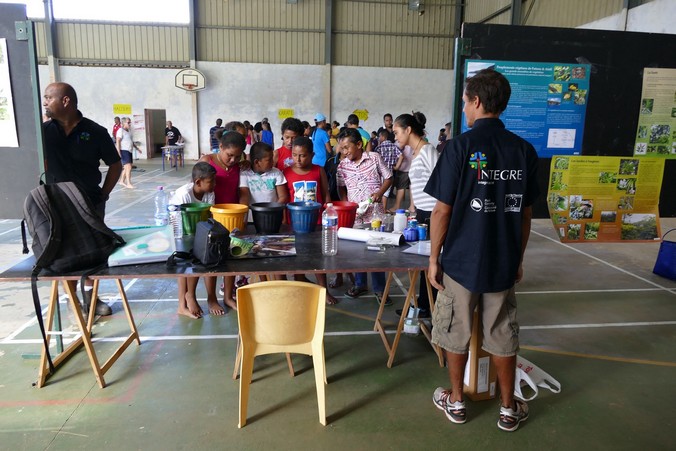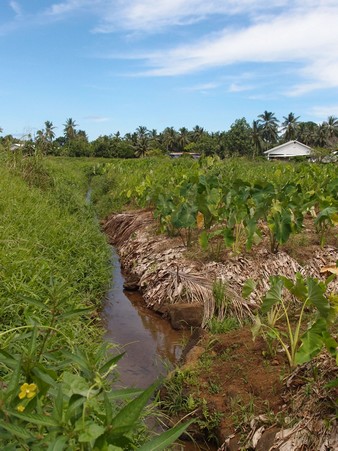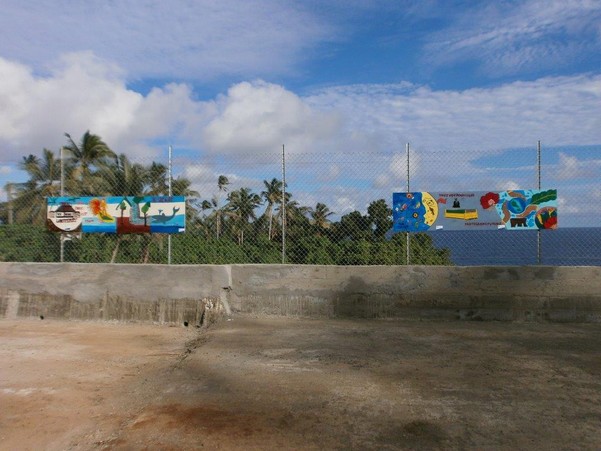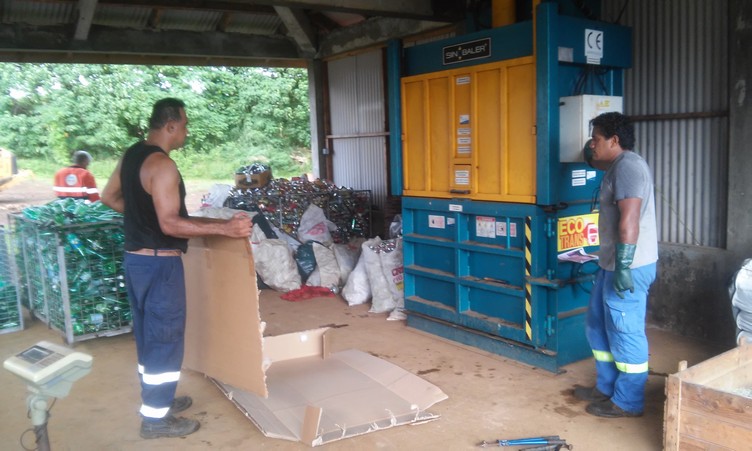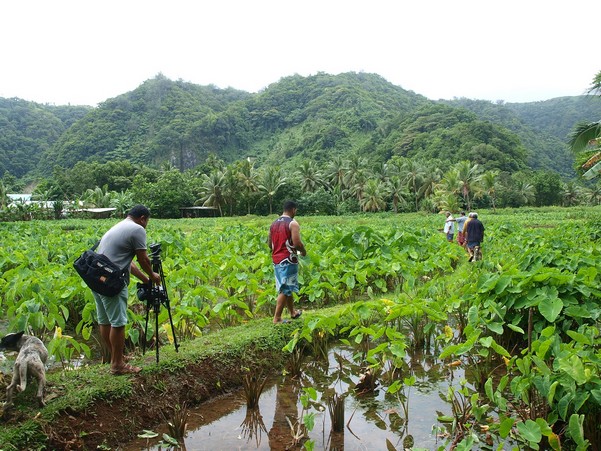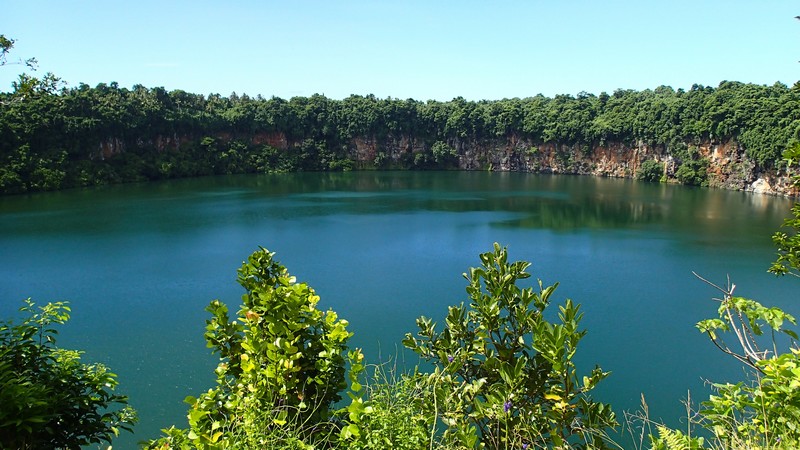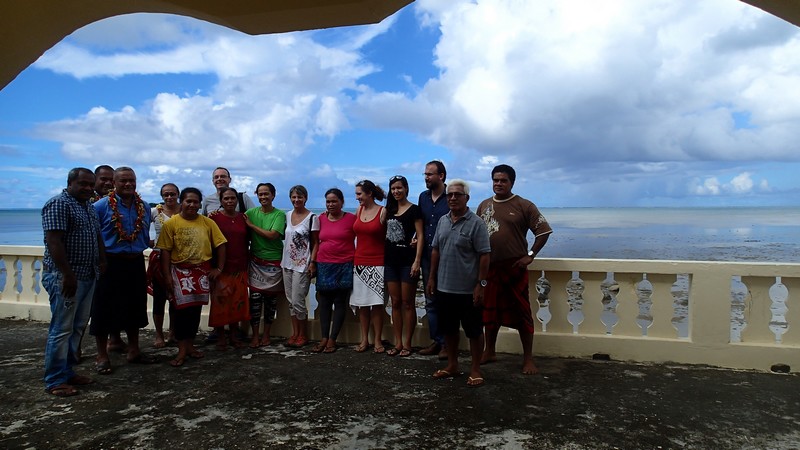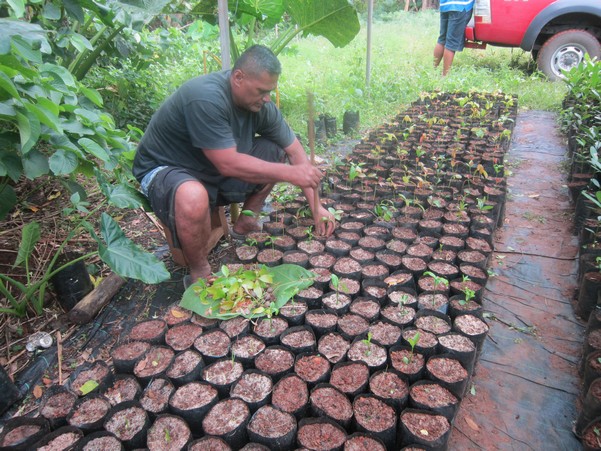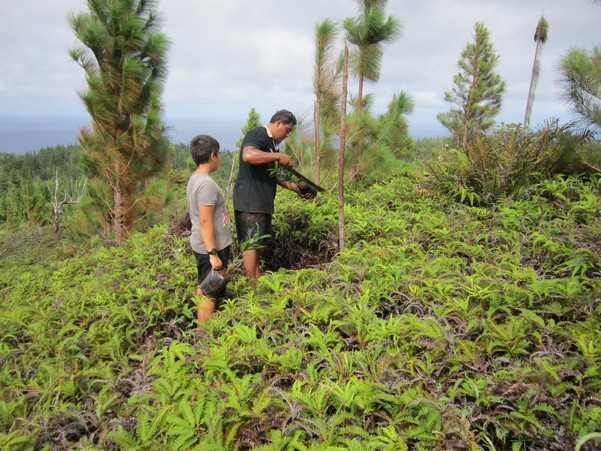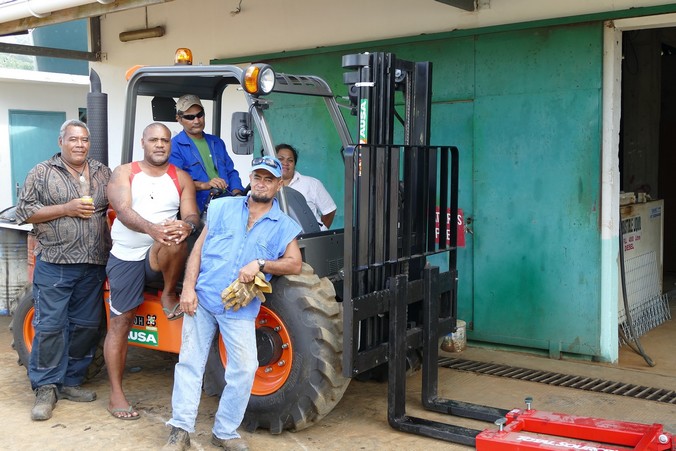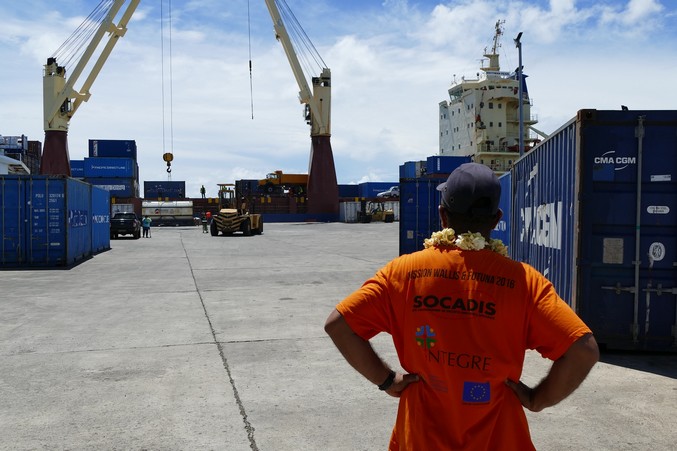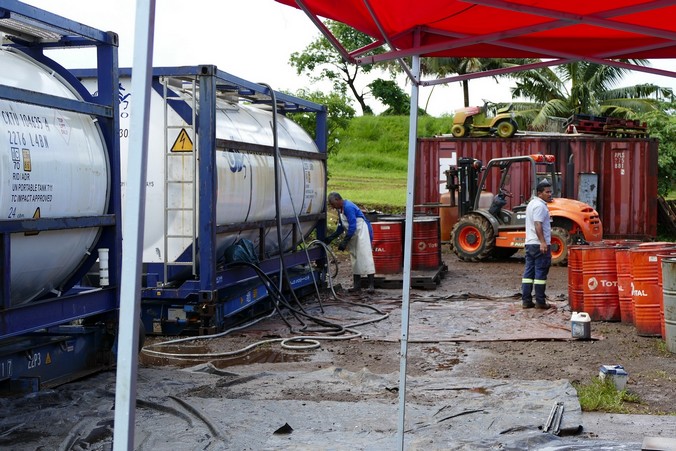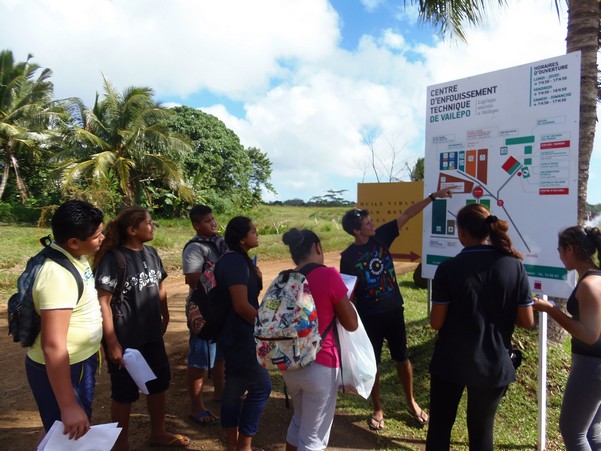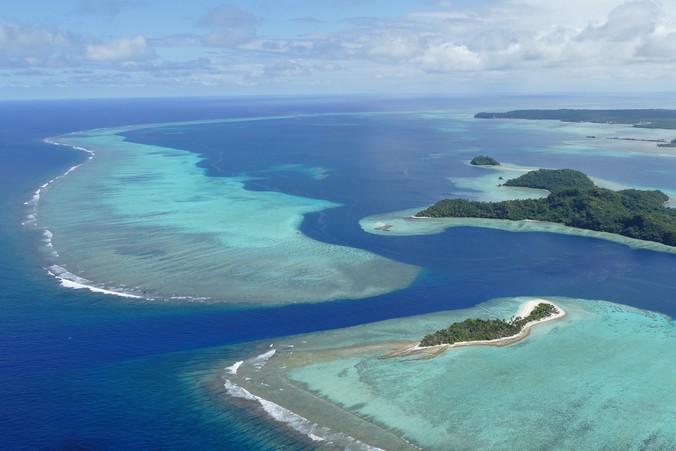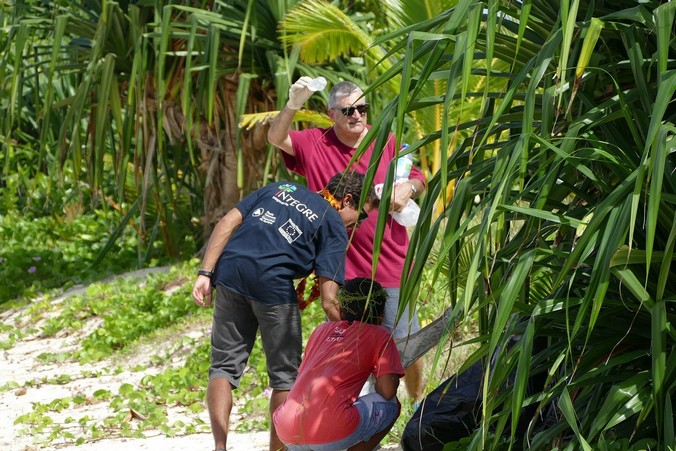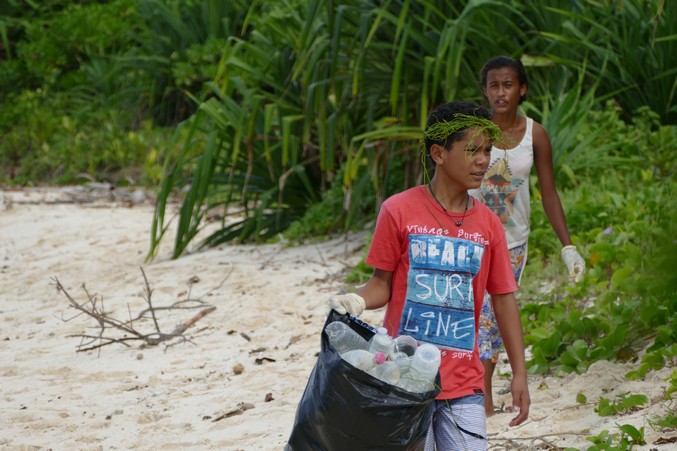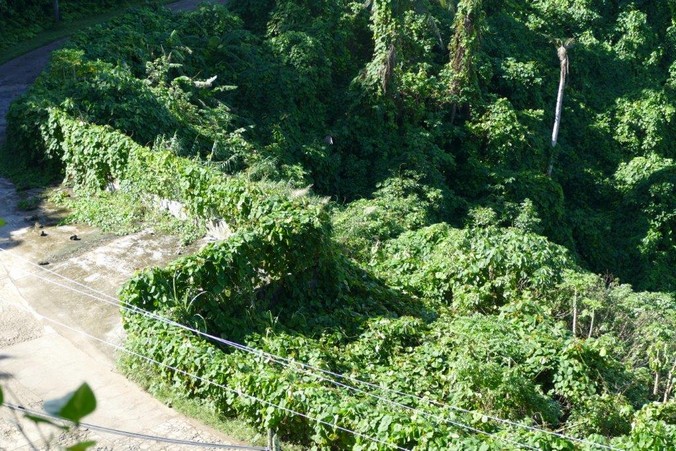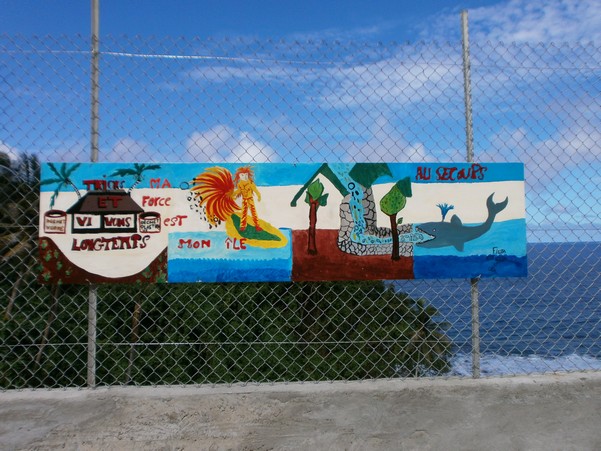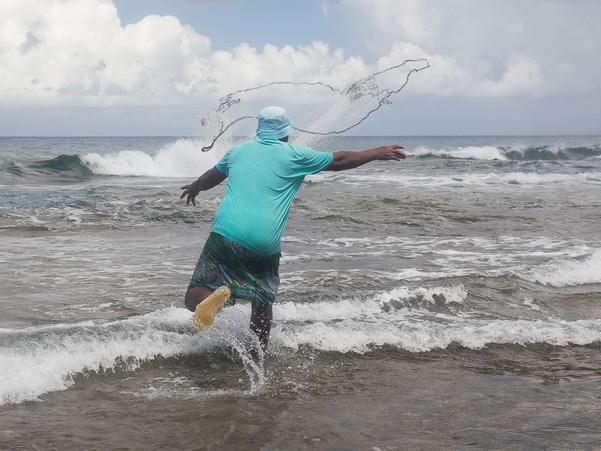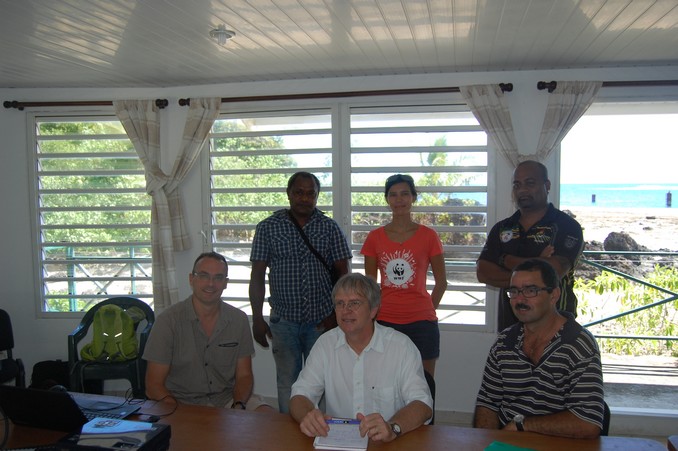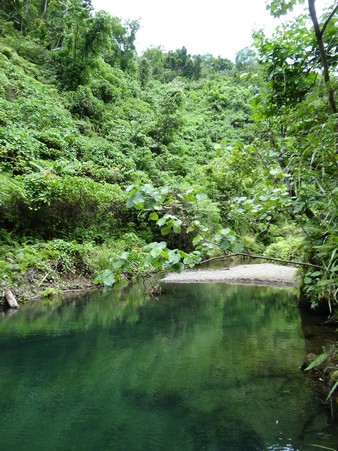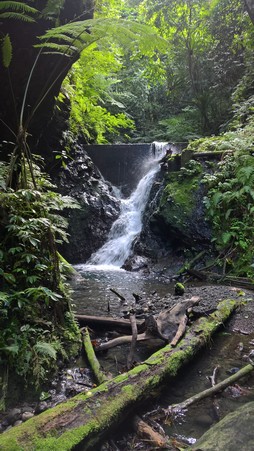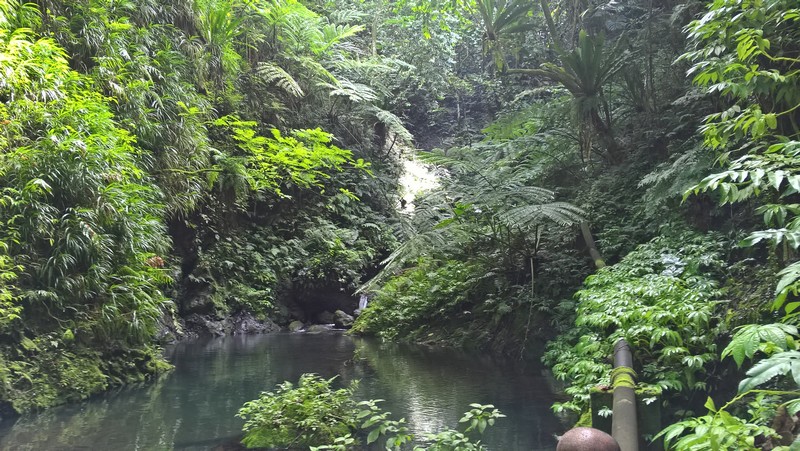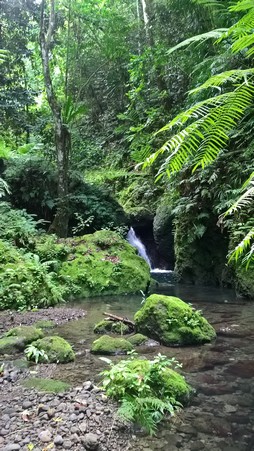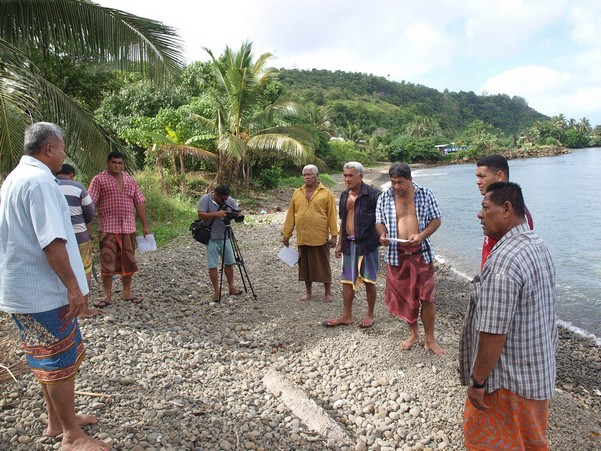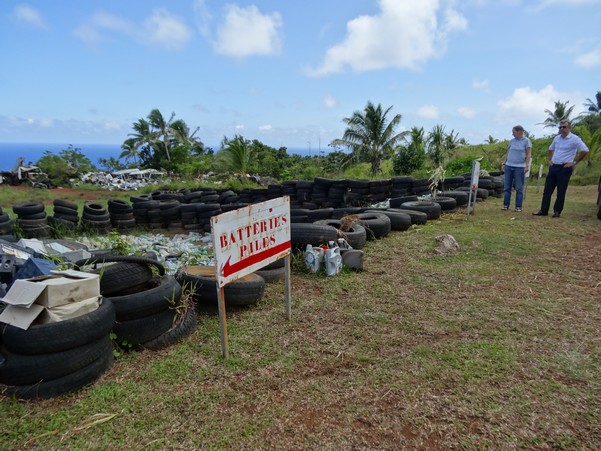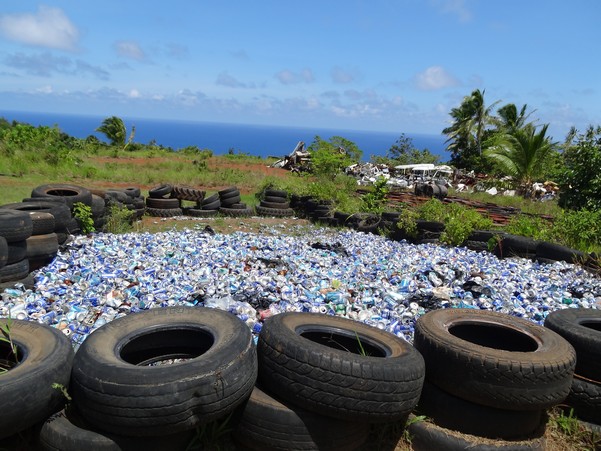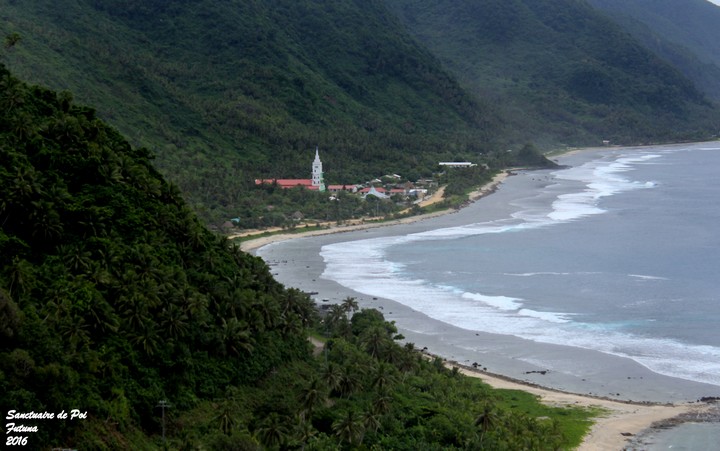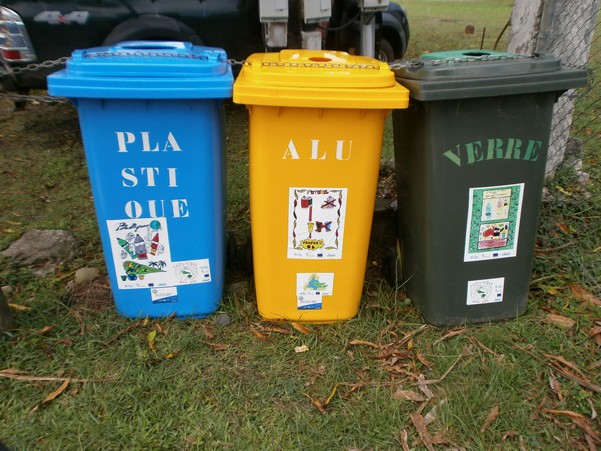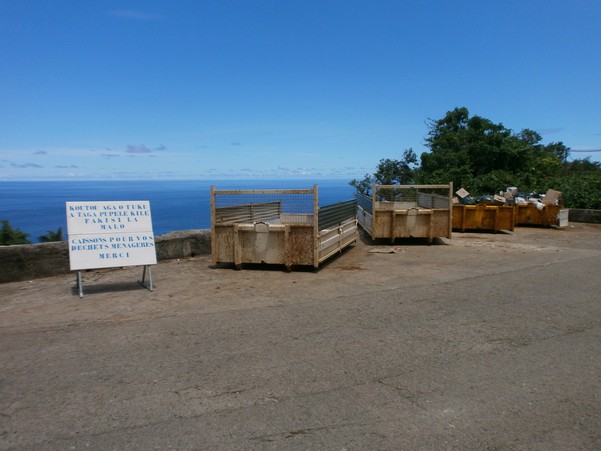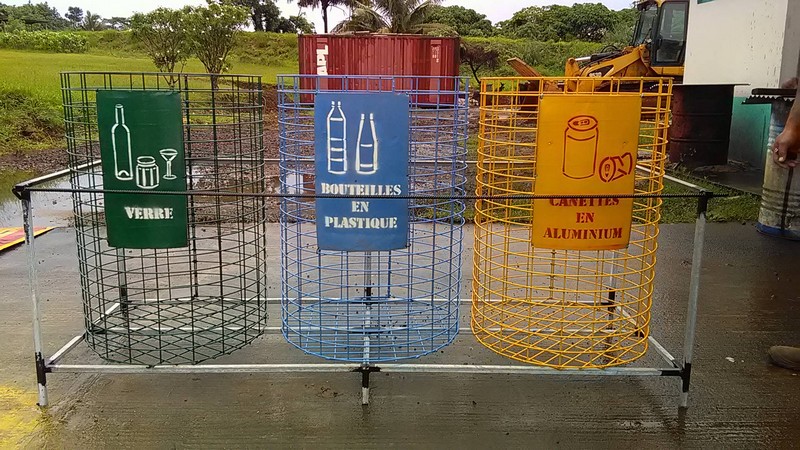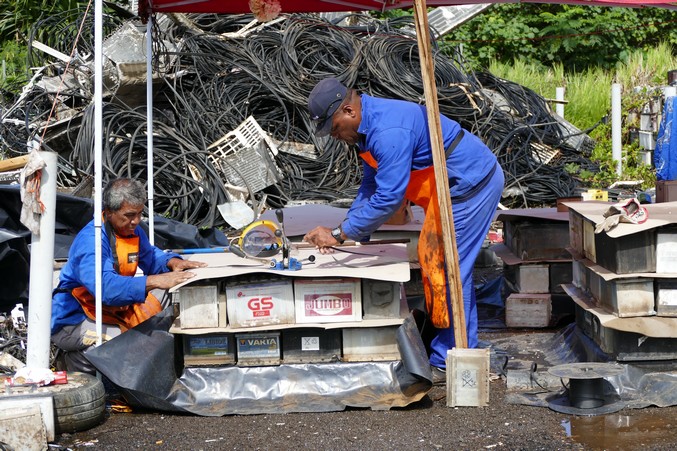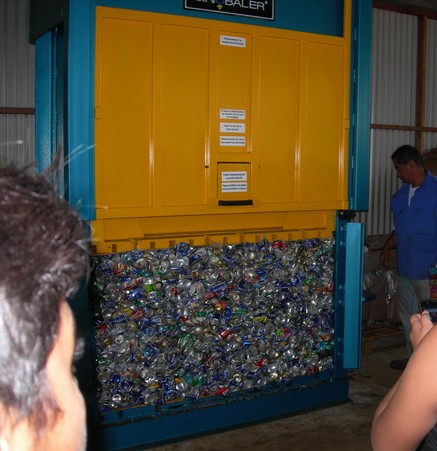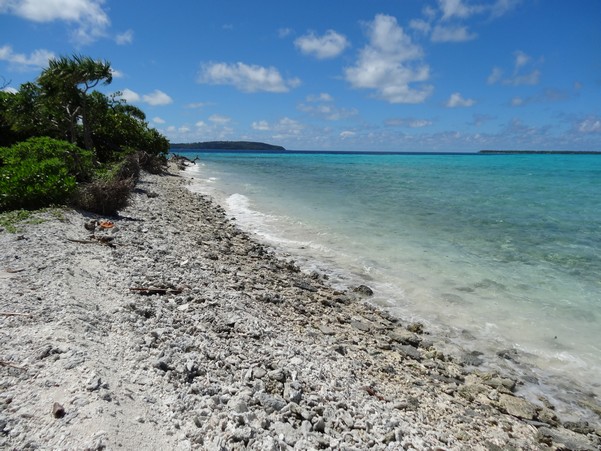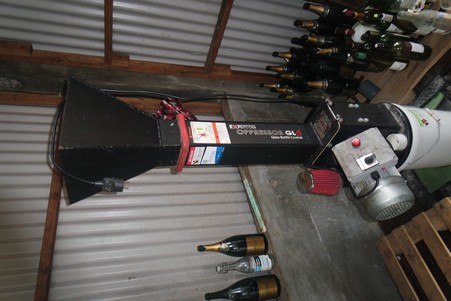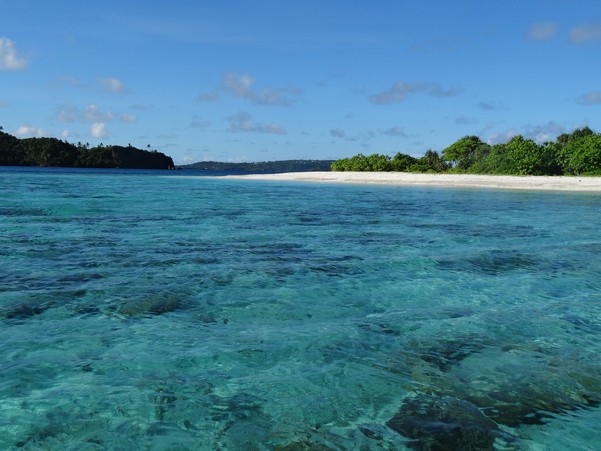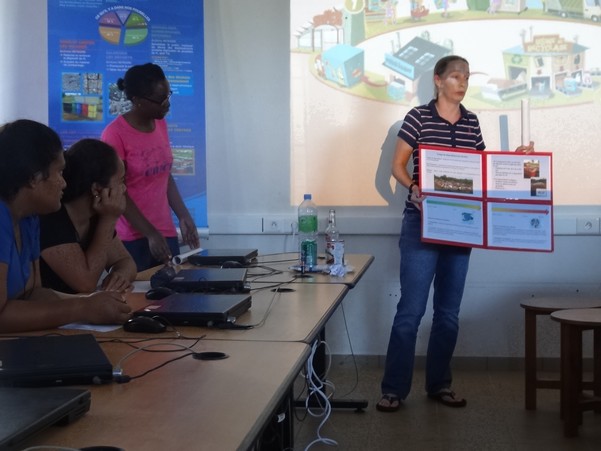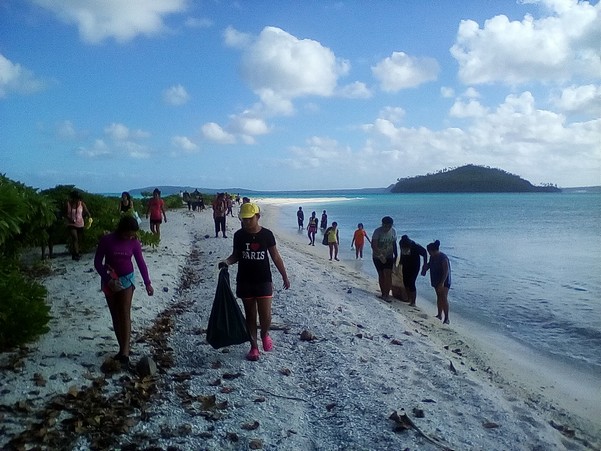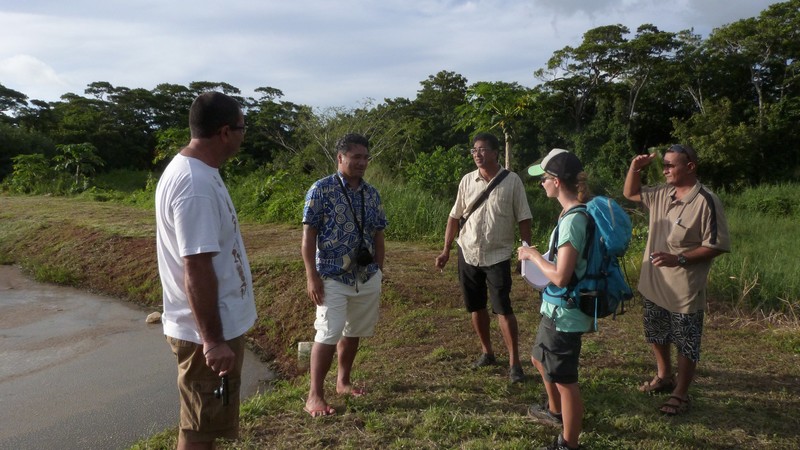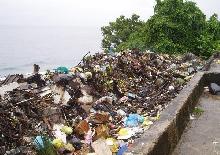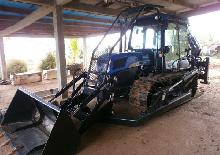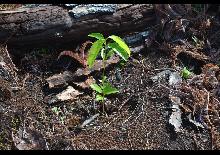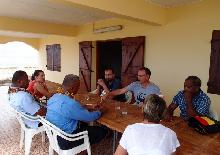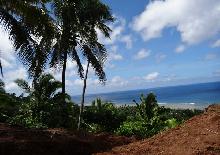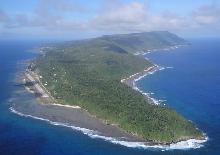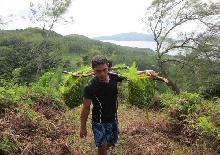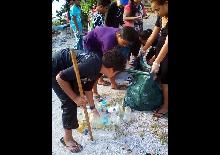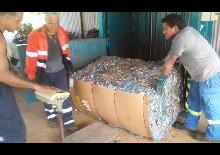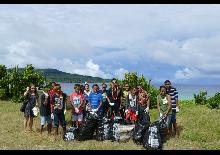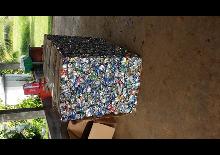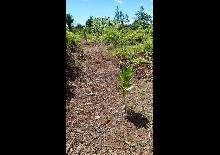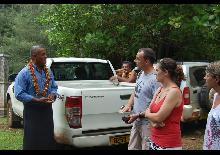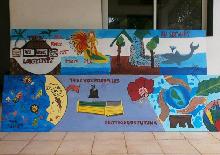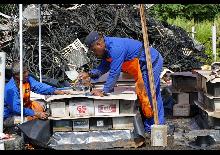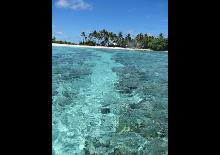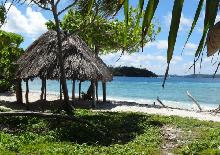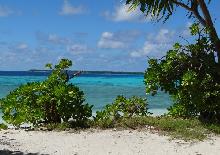
INTEGRE Project was working towards the following objectives :
- Improving waste management and educating the community about this issue ;
- Limiting the risks of pollution, particular for the groundwater pollution hazard ;
- Helping preserve natural resources ;
- Helping contain coastal erosion ;
- Helping preserve biodiversity.
On the site of Wallis Island and Lagoon, the balance of the activities is the following one :
- WF - C2W11 : Waste management (strengthening of TLC)
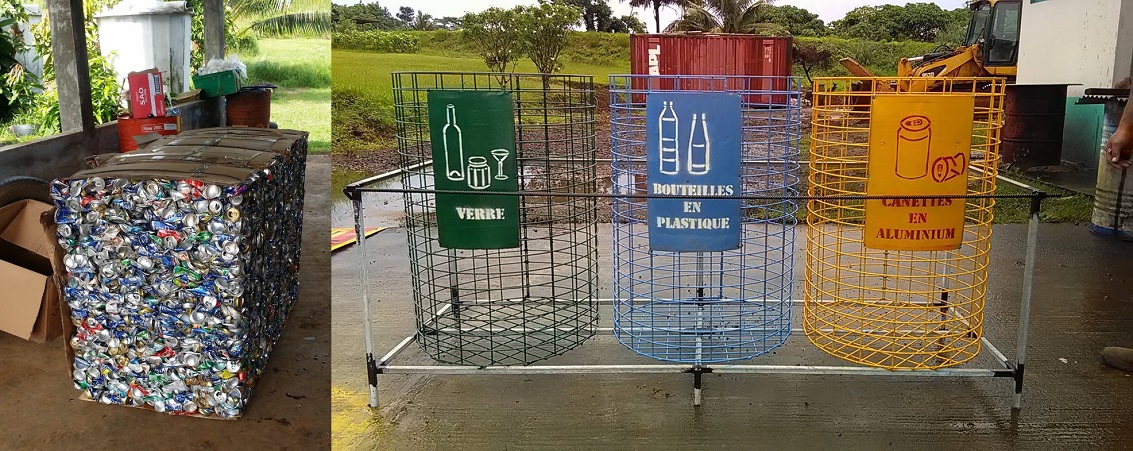
This activity is undeniably one of the flagship activities of the INTEGRE project in Wallis and is a great success. Before the INTEGRE project, the TLC was in a state that did not guarantee optimal waste management and was even alarming in terms of health and effluent management.
The reinforcement of the TLC's equipment (truck, compactor, elevator, sorting bins, etc.) has made it possible on the one hand to optimise waste management on the island of Wallis. It has also made it possible to promote the actions of TLC staff and to facilitate their working conditions, enabling them to be more involved, motivated and innovative. Thus, the sorting bin project was adapted to the available means: the initial option to purchase imported boxes was replaced by adapted bins, manufactured by ETS agents showing the great appropriation of the project by the actors.
The site is now able to receive all the waste from Wallis and the "Fukuoka" method will make it possible to optimise the operation of the locker in the long term. Thus, the study and project management of the locker was the subject of an EIF (Exceptional Investment Fund) project submitted by the Environment Department. A plan to modernise the Vailepo TLC, co-financed with ADEME (Agence de l'Environnement et de la Maitrise de l'Energie), is currently being drawn up with a programme: preliminary studies, the rehabilitation and closure of the current locker, the creation of a new locker equipped with a FUKUOKA system, the acquisition of suitable and high-performance equipment, and the provision of a reception area and orientation for voluntary contributions.
At the same time, since July 2017, the Territory has introduced an ecotax on plastic and glass cans and bottles to encourage people to sort and also to ban the use of plastic bags.
The INTEGRE project was therefore the trigger for a major policy to improve waste management in Wallis.
For more details, consulte Activity statement : WF - C2.W11 Gestion des déchets (renforcement du CET)
- WF - C2W12 : Awareness-raising actions (middle and high schools of Wallis State)

These awareness-raising activities were essential in Wallis' shift towards a strong environmental consciousness.
The awareness has reached its objective with students fully invested in the projects, even outside school hours, students actors and bearers of messages that they enjoyed presenting to visitors outside the college (parents, villagers, administrators, other students and even Minister of the Republic...). The students were encouraged to complete their accomplishments and to study a broadening of the themes to be exploited related to the problems of sustainable development and environmental protection.
In the same way, at the high school, the project to set up sorting bins made it possible to enhance the work of the students of Locksmith/Metalworkers School, to make it visible in the high school and to show their professional production capacities. The TV spot project has provoked a great mobilization on the part of various actors. The pupils who participated in the production of TV sport benefited from multidisciplinary learning, which was directly promoted in their curriculum as an end-of-study educational project, and whose scope, in terms of awareness, affected the entire population of the territory. The spot also won a France Télévision selection prize and was presented during the State Secretary's visit to the Ministry of Ecology who undertook to put it on the Ministry's website.
For more details, consulte Activity statement : WF - C2.W12 Actions de sensibilisation (collèges et lycée d'Etat de Wallis)
- WF - C2W13 : Improvement of breeding management
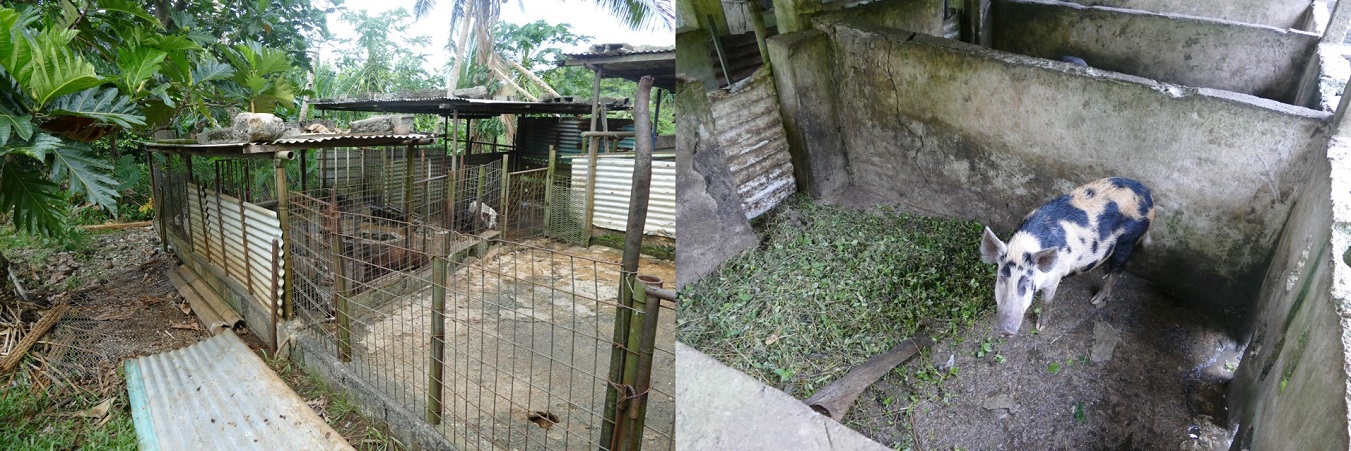
The involvement of schools that could act as demonstration platforms, such as the Agricultural Vocational High School, was essential to achieve the objective of limiting pollution risks on the environment by improving breeding practices. This work made it possible to set up a network of partners with the aim of testing and disseminating the innovative processes to be set up (feeding but also livestock management in general).
Awareness has paid off and new project leaders have wished to be integrated into the network of partners that has been created. New experiments were tested in the first quarter of 2018 in order to set up an integrated open-air agriculture / livestock management system with a 6-month rotation.
The innovative "dry litter" activity received extensive press coverage and several reports (television and radio) were broadcast to inform and raise awareness among the population about the various advantages of introducing dry litter farming. Several breeders or individuals have contacted the CCIMA to obtain more information on this technique in order to implement it. The network is committed to doing so with technical support.
For more details, consulte Activity statement : WF - C2.W13 Amélioration de la conduite d'élevage
- WF - C2W2 : support for Wallis water resource management
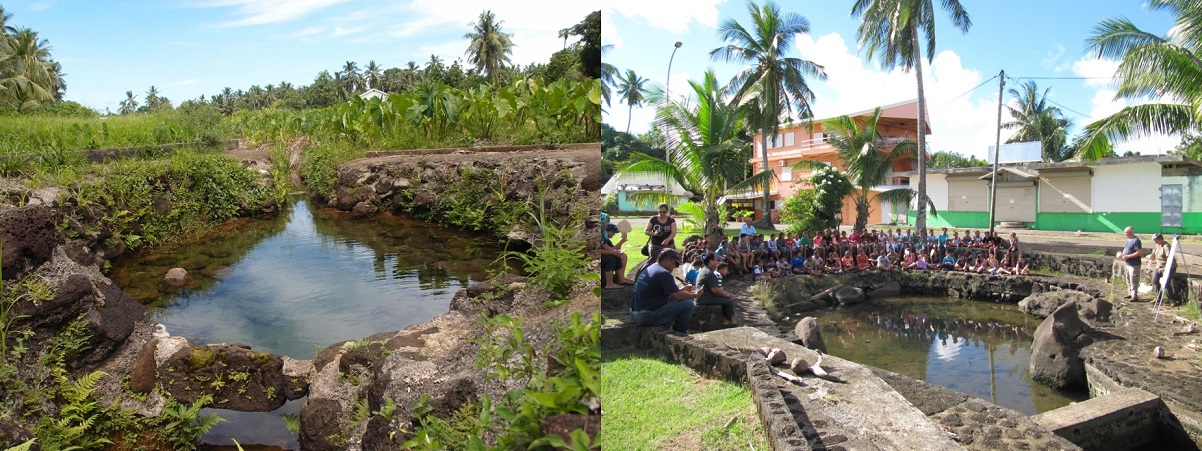
The sanitation situation in the protection areas was made possible thanks to the work of the ENSIL trainees, which enabled the Territorial Environment Service to finance the rehabilitation of at-risk housing, as part of the development contract.
The definition of the protection perimeters for drinking water wells in Wallis is a prerequisite for the declaration of public utility (DUP) and the establishment of the protection perimeters for drilling water which may be set up by the publication of decrees. This activity continued in the first quarter of 2018, by raising awareness among the village chiefs concerned. Regulation for Wallis is planned under the 11th EDF.
This sanitation diagnosis carried out on the island of Wallis will make it possible to draw up a master plan for sanitation and its implementation in the territory. This action should be carried out under the 11th EDF.
For more details, consulte Activity statement : WF - C2.W2 Appui à la gestion de la ressource en eau de Wallis
